Just back from the 2018 Hokkaido Winter Landscape Adventure tour and workshop, today I’m going to start a travelogue series to walk you through our antics as we pretty much circumnavigated the beautiful northern island of Japan.
Having met the group over dinner on the Sunday night of January 7, we gathered bright and early the following morning to board our flight to Hokkaido, where we’d spend our first three days in the Biei area. This is a part of Hokkaido that I’ve been traveling to for 15 years now, and I absolutely love this area for minimalist Winter photography.
Our first stop was to photograph a tree that I quite conceitedly called Martin’s tree. Many of the trees in the Biei area have names, often because of a commercial in which they featured, or just based on their appearance, like the Parent and Child trees not far from my tree, but my tree doesn’t have a name, so I gave it mine.
As you can see in the first photograph of this travelogue series (below) it’s a birch tree, situated on top of a hill, surrounded by small trees and bushes that are gradually overtaking the line of the hill.
It was nice and cloudy for much of this first day, although it didn’t snow. My tree generally looks fine without falling snow, but many of the other locations we visit in Biei depend on falling snow, so I always get a bit nervous on the first few days hoping to get the right weather.
I shot this first image at 85mm with my 24-105mm f/4 lens, with the aperture set to f/14, and ISO at 100, for a 1/50 of a second shutter speed. Back in my favorite snowy environment, I shot in Manual mode as usual, and just adjusted my exposure until the white’s were all the way over to the right side of the histogram, to ensure that the white snow was white and not too gray, as the camera would have it if left to its own devices.
As the day progressed, the sky cleared and was almost completely blue at some points, which made me even more nervous. We continued shooting and got some shots that I am happy with, although I knew it would be much more special with falling snow, so I kept my fingers crossed. Here’s another shot from the first day, when we stopped at a place I like, where the plow lines in the soil often show through the snow. This is one spot that works when there is some sunlight, as it helps to accentuate the troughs made by the plow lines.
Some members of this year’s group asked me why I often place the tree in the top of the frame, with lots of snow instead of more sky, and the answer is really quite simple. If I’m looking up at a tree on a hill, I want it to look like it’s on a hill in my photograph. If you place the horizon closer to the bottom of the frame, it’s harder to tell that the tree is on a hill. Of course, if there is a great sky, I’ll consider including more of it, but as you’ll see, a snow-covered hill is generally more important to me than a relatively uninteresting sky. I shot this image at f/14 for a 1/30 of a second at ISO 100, with a focal length of 56mm.
The last image from the first day that I want to share is this very simple photograph of a line of deer footprints in the snow (below). I find the simplicity of this shot quite appealing, although I’m sure it’s not for everyone. I also like the fact that you can’t easily see that the prints actually make their way into the frame from the right edge until you study the image a little more closely.
Again, there’s lots of hill here, but this time because the snow contains the main subject, and we do need to see that these prints are going uphill as well, so this composition makes sense to me. I shot this at f/16 for a 1/4 of a second at ISO 100 and a focal length of 100mm. This was actually the wide end of my 100-400mm lens, which I use for landscape quite a lot on this tour.
The following morning, on day two of the tour, I got my wish as we started the day with a beautiful shoot in the snow around the Takushinkan Gallery. This is pretty much my standard photo (below) of the line of trees behind the gallery, which I can’t resist shooting each year.
The snow completely cleans this scene up. The top of the hill behind the trees disappears, as do the distant mountains and trees, which you can just about see to the right of the right-most tree in this image. I shot this at f/14 at 22mm with my 11-24mm lens for a 1/13 of a second at ISO 100.
Right next to the line of trees are three silver birch trees that stand proud looking somewhat austere in their wintery surroundings, as we can see in this next image (right).
Here the line of the top of the hill behind the trees is still visible, with the somewhat brighter sky above it to add a bit of contrast. There were some human footprints in the snow in front of these trees that I cloned out in Capture One Pro, but I left the animal footprints behind the trees, as I often don’t mind seeing these if they are non-human.
You can probably make out the streaks of snow above the trees in this shot as well, showing that the snow was actually still falling quite heavily.
I think the reason that the top of the hill is more visible in this shot is because I’m closer to the trees. The more distance I put between me and the trees, as with the previous image, the more the snow is able to white-out the background.
This image was shot at f/14 for 1/15 of a second at ISO 100, and a focal length of 31mm.
The next image has become a standard that I simply have to shoot when the snow starts to fall in Biei, but again, I can’t resist this shot (below).
This image works for me because it looks like a pencil drawing, with the streaks of snow caused by the 1/15 of a second shutter speed at f/16. I was at ISO 100, but as the snow gets heavy, the light is this low without using an ND filter or anything else to reduce the light. I also really like the way the brow of the hill to the left of the trees is only visible for a little way, then completely merges into the sky from around the middle of the photograph.
This is actually the same hill that had the deer footprints in that we looked in an earlier photograph, but the snow had completely covered them by the time we got back there on our second day.
In this next image too, I really like the beautiful subtle line in the snow and a slightly brighter patch of snow behind the tree adding an accent (below). I zoomed in on the tree a little more for this shot, and that also helps us to see the snow streaking across the black bark of the tree trunks.
I also like the bamboo grass and few additional stick poking out of the snow to the right of the tree in this shot. These things just add a touch more interest to otherwise very minimalist work. I shot this at f/14 for a 1/25 of a second at ISO 100, and a focal length of 371mm.
The next photo is slightly different to my other work from this area, in that it’s not quite a beautiful tree, rather a scrappy mess of twigs, but I was really attracted to this form (below). Initially, it kind of looked like a cartoon character, with that top right twig almost like the head of a raggedy bird.
Then, after getting home and looking at this photo on a larger screen, initially my 56-inch 4K television, my wife and I noticed what looks like a little man, perhaps even a Jiminy Cricket type of character climbing the top right twig that I was originally seeing as a bird’s head and beak. You might not be able to see this in the web version, but I thought it was a fun little “Easter egg” to find in the details of the photo. This was shot at f/16 for a 1/25 of a second at ISO 100, and a focal length of 158mm.
Trying unsuccessfully to keep the number of shots from Biei to a minimum, this next image (below) is the same tree from the second shot we looked at today, but again, the troughs from the plow lines were pretty much hidden on this second day. Another reason that I love it when it snows is because the sky is generally either the same tone or darker than the snow, so the snow is allowed to stay white, as it feels most natural. When the sky is brighter the snow gets greyer, which I don’t really like.
Other things that I love about this scene are the subtle shadow under the tree, and the grasses poking their way out of the deep snow. These add a lovely accent and really help to complete the photograph, in my opinion. I shot this at f/14, for a 1/50 of a second at ISO 100, and a focal length of 76mm.
I couldn’t resist the light hitting the four trees in this next image (below) as we drove through Biei, so we stopped at a place that we don’t normally stop at, and I’m pleased we did. It’s nice to add new location possibilities to a trip, and I’m sure we’ll stop here again.
Some of the scenes we shoot are somewhat deceiving as you can’t see what’s outside the frame. Here, to the left of this scene, there is actually a thicker line of trees and a fence, and if I recall a bit of a ditch running down towards the foreground. Although that will work for some people, personally I prefer the simplicity of this composition, shot at 214mm with an aperture of f/11 a 1/320 of a second exposure. I had increased the ISO to 400 for that faster shutter speed, as it was blowing a gale and there actually a bit of rain in the wind that hit the front element of my lens very very quickly if my exposures were too long.
Just as we’d all gotten back on the bus after shooting the previous scene, the cloud started to break, revealing an amazing stormy cloud sky, so we filed back off the bus and spent another fifteen minutes or so photograph the new scene, as you can see here (below).
With the sky being so bright in places, the trees were forced into almost silhouette for this shot, but I love the strongly defined shadows that they cast. I’m a huge fan of the previous type of image with much more subtle tones, but this is a nice addition to my Hokkaido Winter Landscape portfolio in my opinion. Because I had exposed for the sky, I actually had to brighten up the foreground snow quite a bit with an Adjustment layer in Capture One Pro.
Because the scene was so much brighter, I dropped my ISO back down to 100 for this shot, as that still gave me a shutter speed of 1/400 at f/14, and my focal length was slightly wider at 170mm.
OK, so that was actually eleven images for this episode, one more than usual, but I wanted to show the comparison between the last two images. We’ll pick up the trail in part two with a visit to the blue falls near our hotel on the morning of day three, before we head around to Mount Asahi for some beautiful scenes from the ski slopes, and then we’ll head over to the coast to continue our journey around the island of Hokkaido.
Hokkaido Winter Landscape Photography Adventure 2020
If you think you might like to join this tour in the future, either let us know that you’d like to be added to the 2019 cancellation list, or secure a spot on the 2020 tour with special guests Nicole S. Young and Brian Matiash, who will be around to offer advice in addition to me, and will be doing a number of workshop sessions during the course of the tour. For details see our tour page at https://mbp.ac/hlpa
Show Notes
Hokkaido Winter Landscape Photography Adventure 2020: https://mbp.ac/hlpa
Subscribe in iTunes for Enhanced Podcasts delivered automatically to your computer.
Download this Podcast in MP3 format (Audio Only).
Download this Podcast in Enhanced Podcast M4A format. This requires Apple iTunes or Quicktime to view/listen.

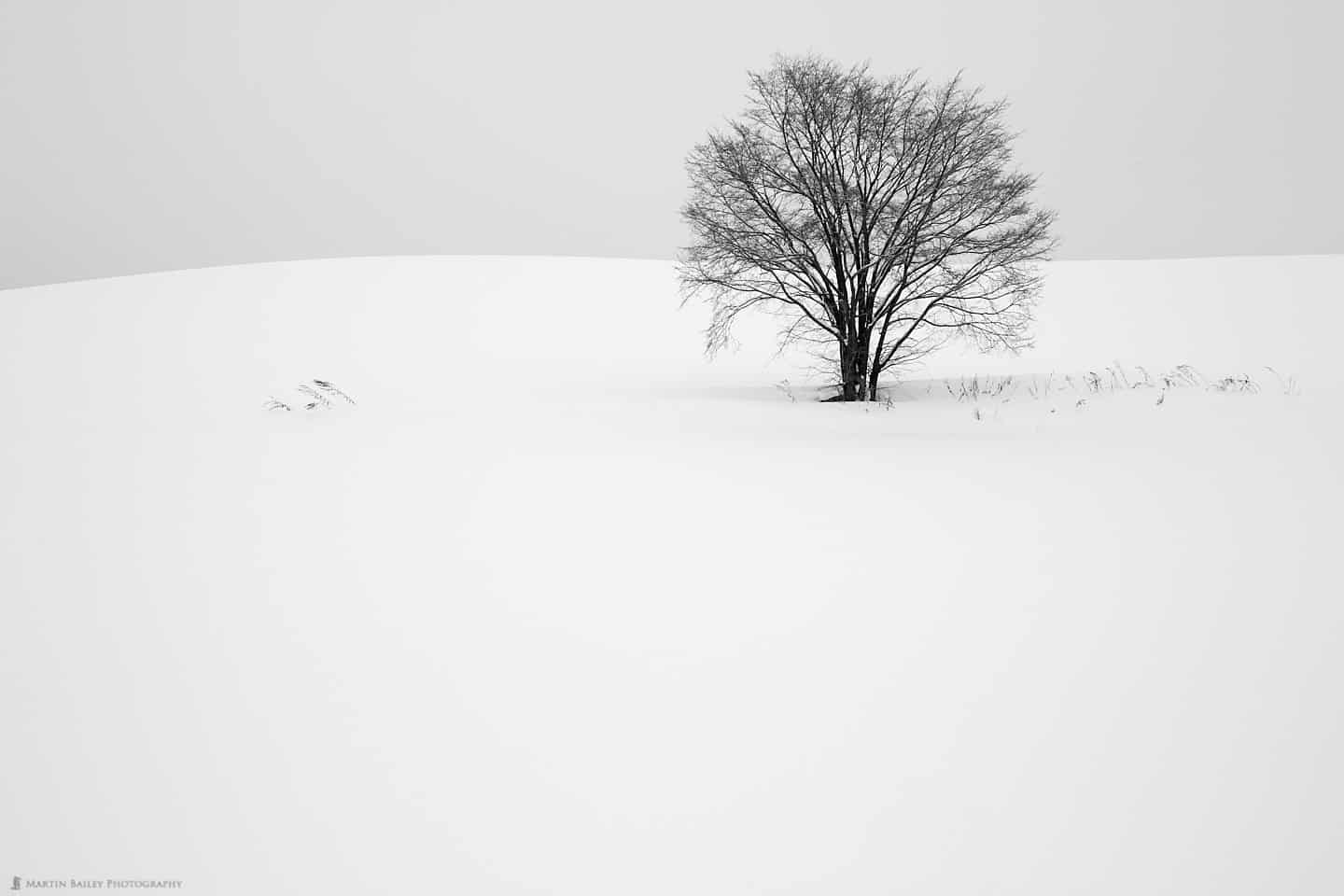
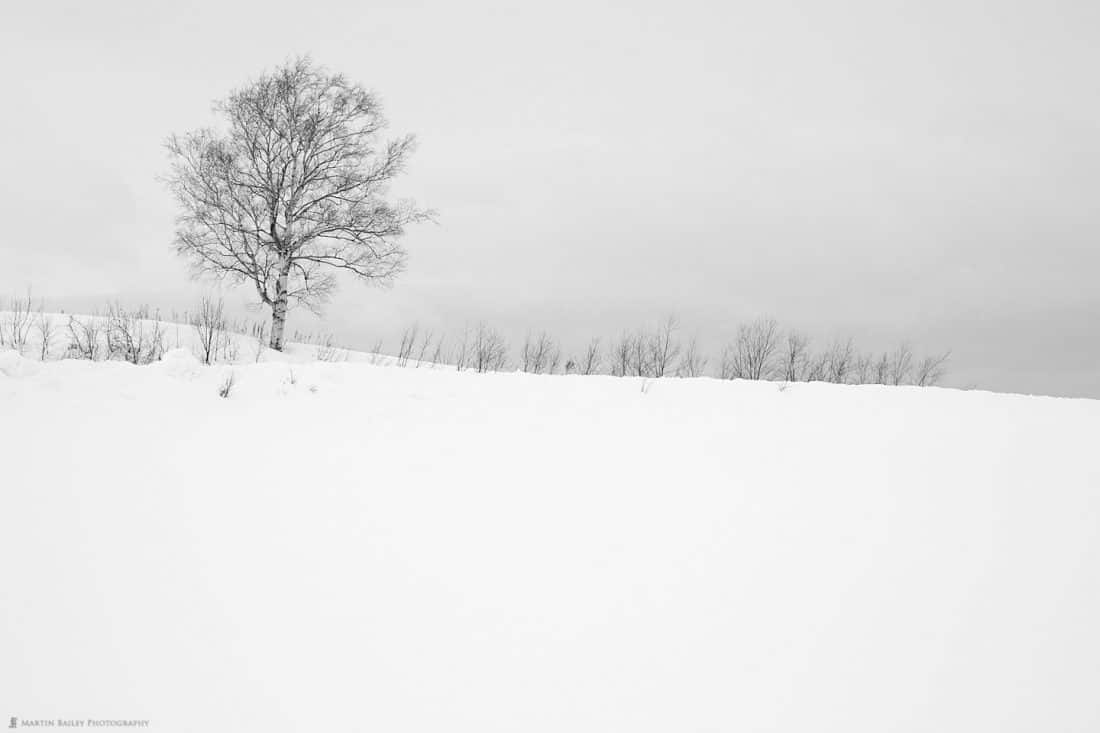
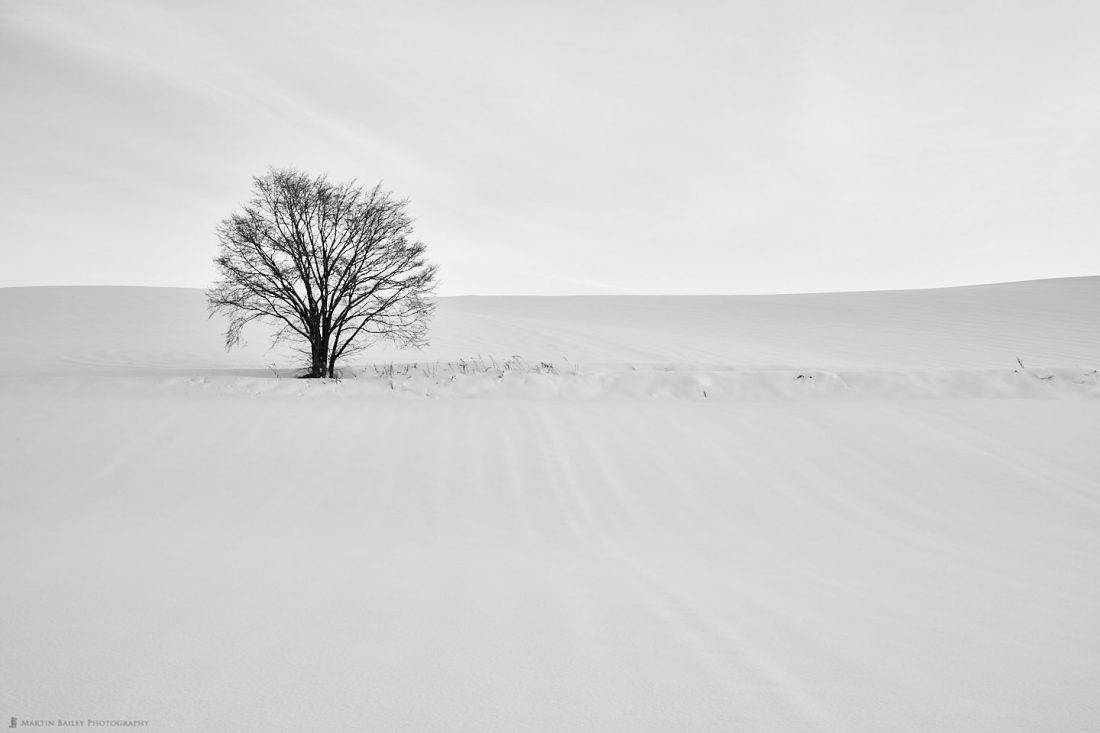
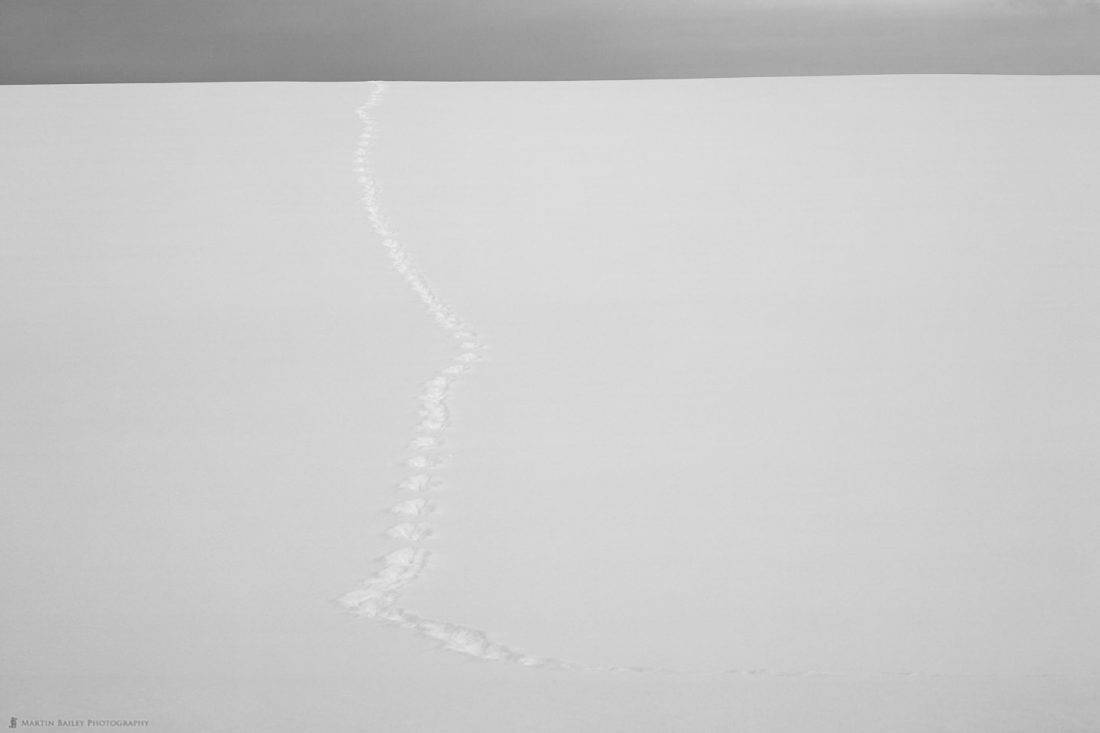
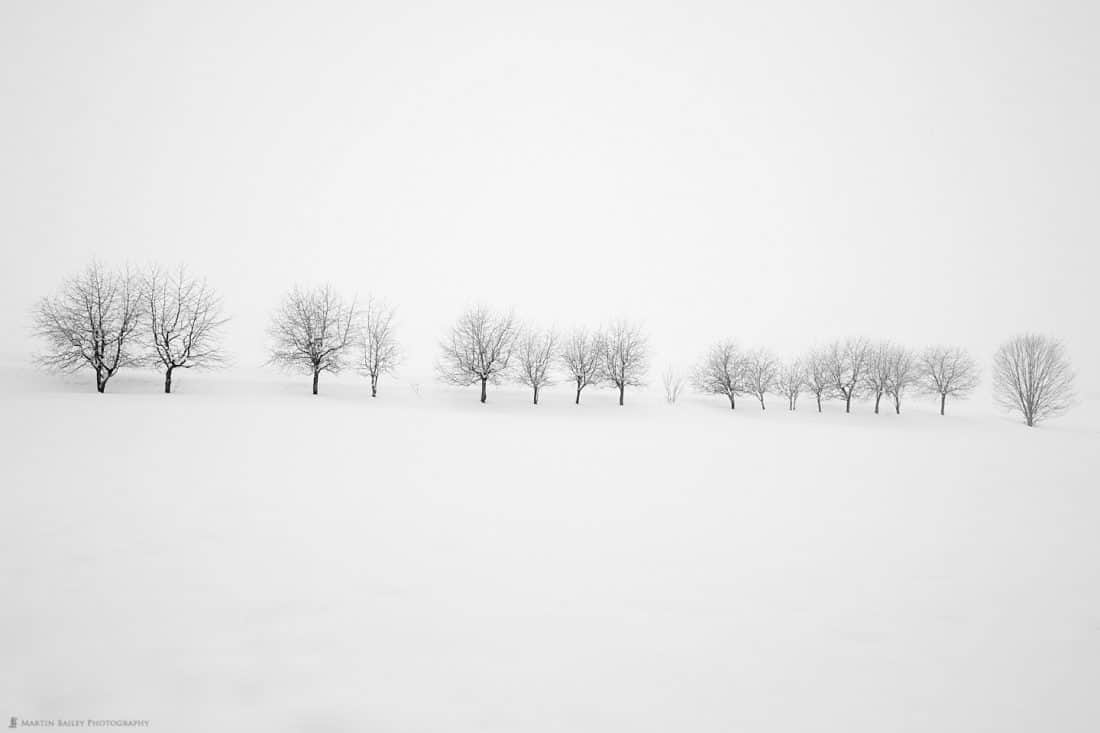
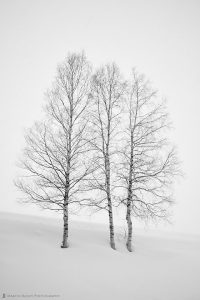
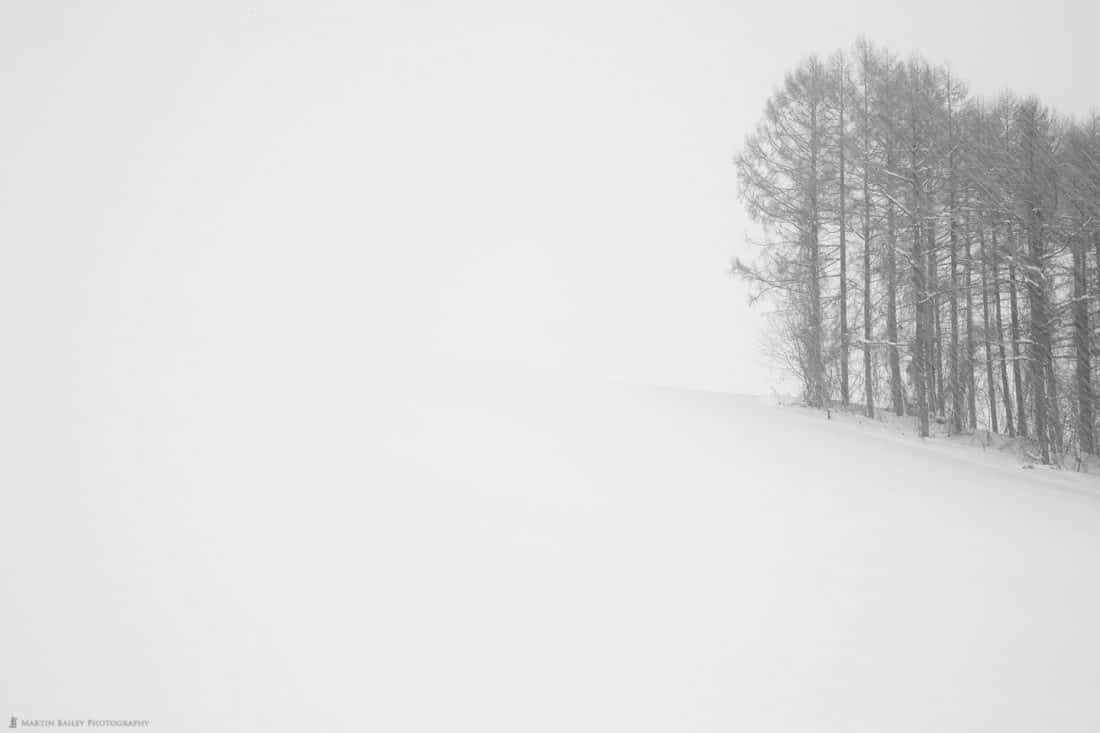
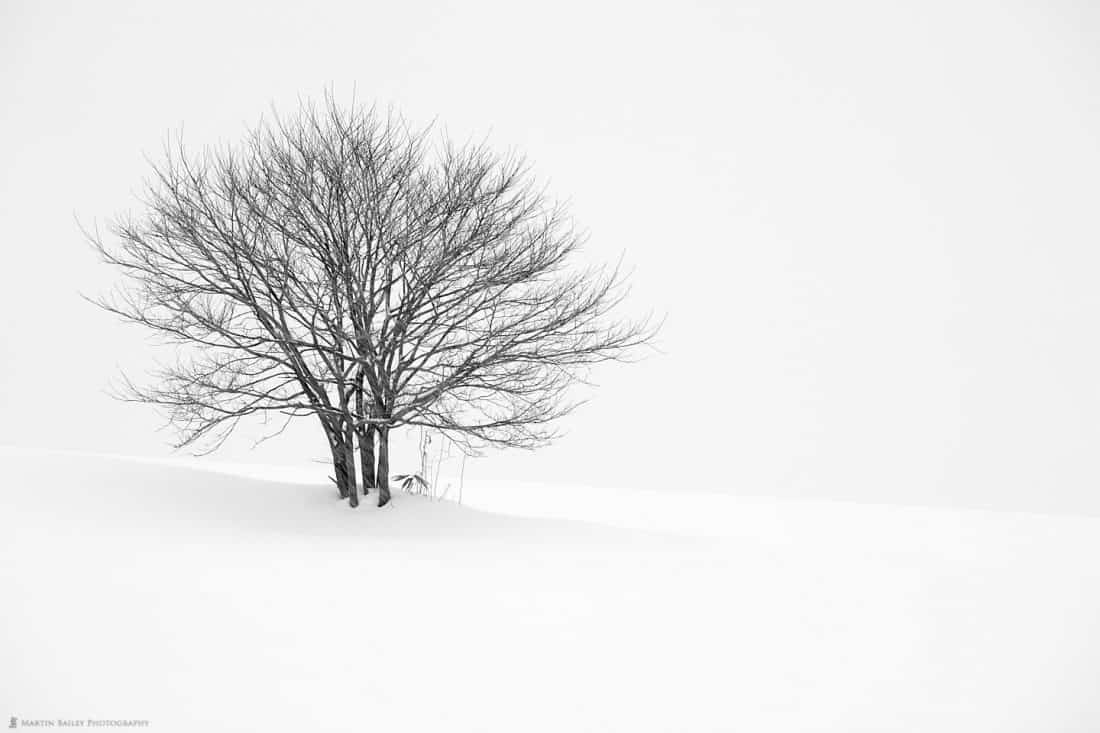
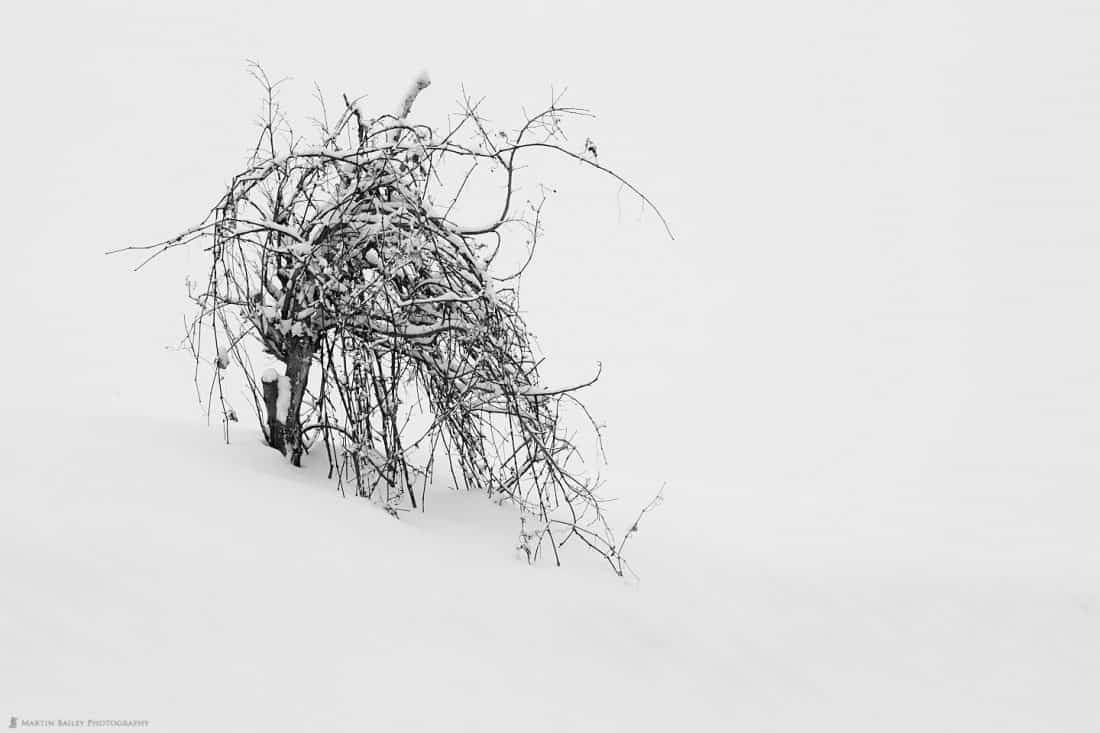
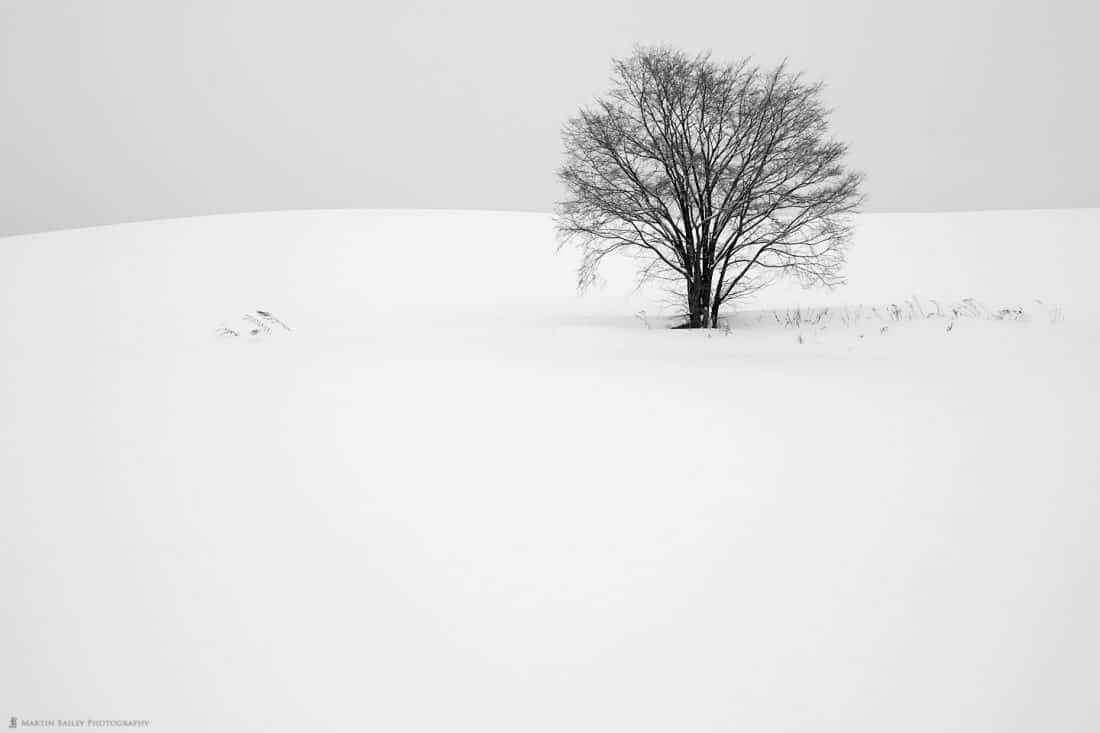
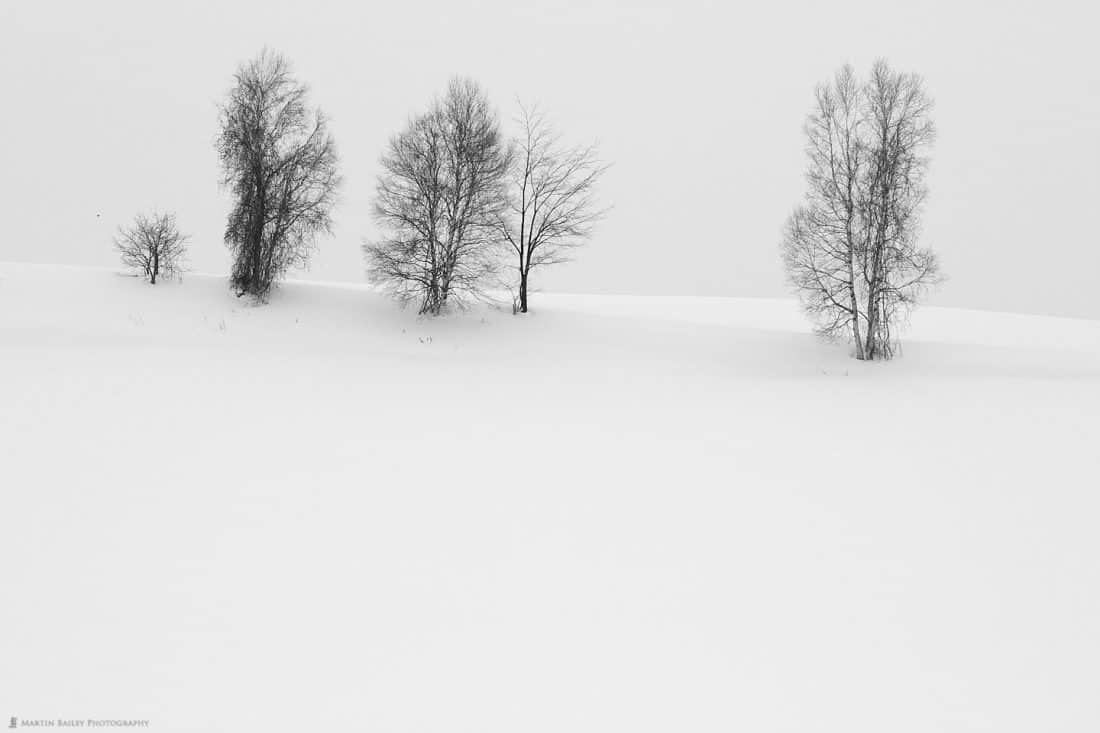
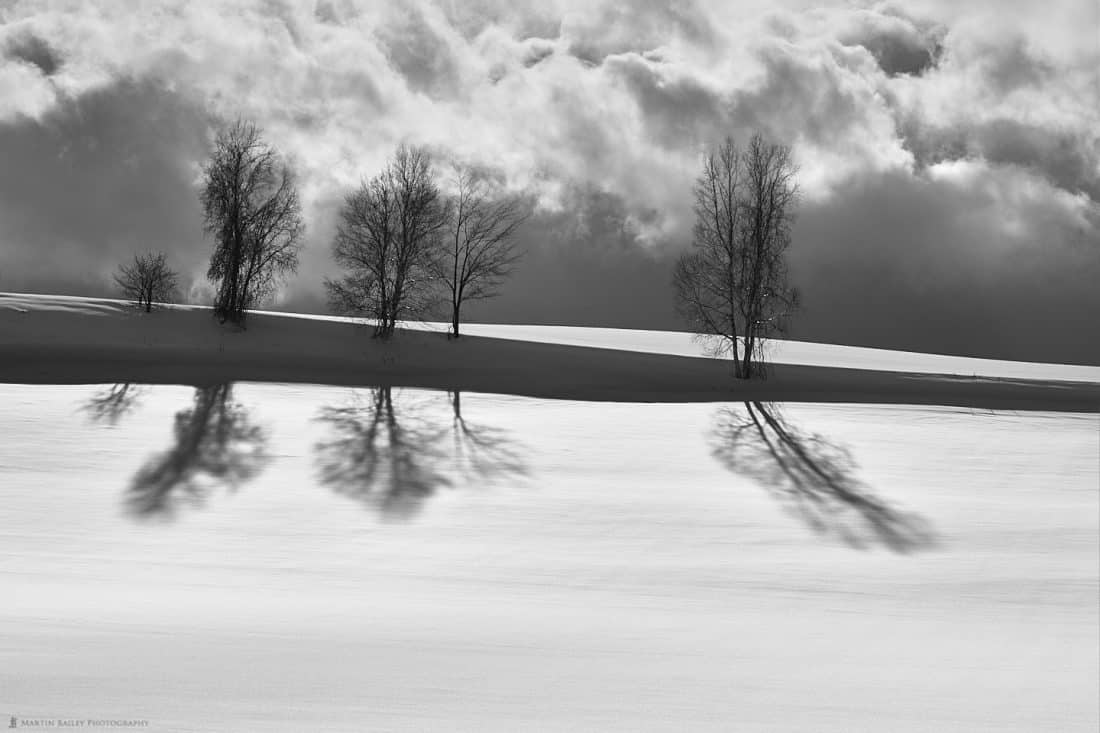


The simplcity of subjects makes these photos look majestic. This post has inspired me to look for similar landscape opportunities in Northern Michigan. Simple, beautiful and just plain stunning!
Thanks for sharing.
Thanks for the awesome comment Mark!
As you head out, remember that most of these are how they are because the snow was falling as we shot them. Without snow, the background is too busy. At the very least you’d need very heavily overcast skies to make this sort of image work.
That’s what I love about Hokkaido. Not only does the landscape have a Japanese feel aesthetic to it, the weather fronts from Siberia give us plenty of falling snow. I’m sure you get that in Northern Michigan too though, so finding the right subjects and visiting at the right time is probably your biggest challenge.
Good luck!
Martin.